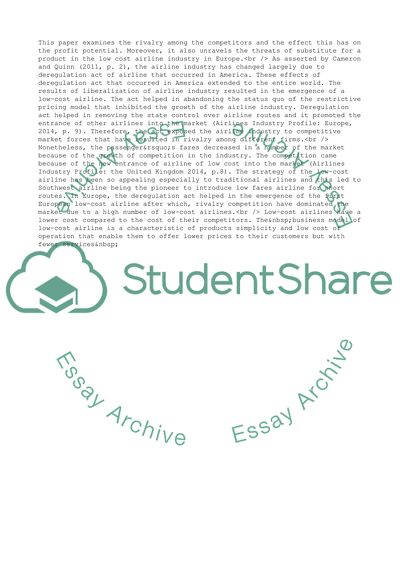Cite this document
(Low Cost Airline Industry in Europe Term Paper Example | Topics and Well Written Essays - 1696 words, n.d.)
Low Cost Airline Industry in Europe Term Paper Example | Topics and Well Written Essays - 1696 words. Retrieved from https://studentshare.org/management/1693994-examine-the-rivarly-among-existing-competitors-and-the-threat-of-substitute-product-in-low-cost-airline-industry-in-europe
Low Cost Airline Industry in Europe Term Paper Example | Topics and Well Written Essays - 1696 words. Retrieved from https://studentshare.org/management/1693994-examine-the-rivarly-among-existing-competitors-and-the-threat-of-substitute-product-in-low-cost-airline-industry-in-europe
(Low Cost Airline Industry in Europe Term Paper Example | Topics and Well Written Essays - 1696 Words)
Low Cost Airline Industry in Europe Term Paper Example | Topics and Well Written Essays - 1696 Words. https://studentshare.org/management/1693994-examine-the-rivarly-among-existing-competitors-and-the-threat-of-substitute-product-in-low-cost-airline-industry-in-europe.
Low Cost Airline Industry in Europe Term Paper Example | Topics and Well Written Essays - 1696 Words. https://studentshare.org/management/1693994-examine-the-rivarly-among-existing-competitors-and-the-threat-of-substitute-product-in-low-cost-airline-industry-in-europe.
“Low Cost Airline Industry in Europe Term Paper Example | Topics and Well Written Essays - 1696 Words”, n.d. https://studentshare.org/management/1693994-examine-the-rivarly-among-existing-competitors-and-the-threat-of-substitute-product-in-low-cost-airline-industry-in-europe.


